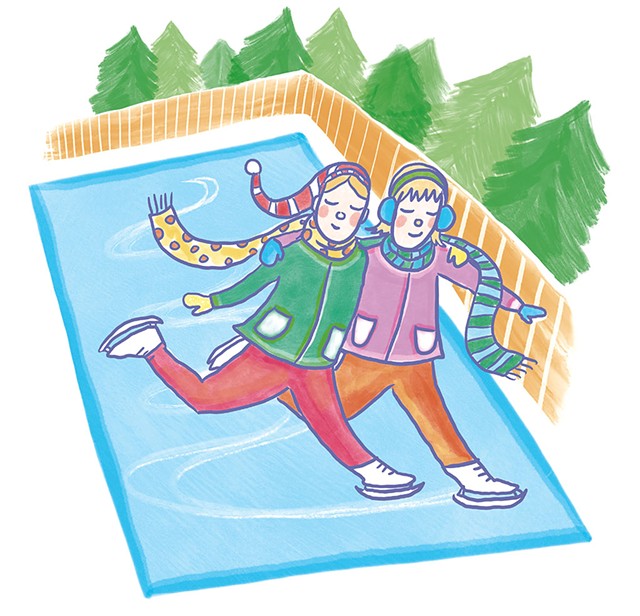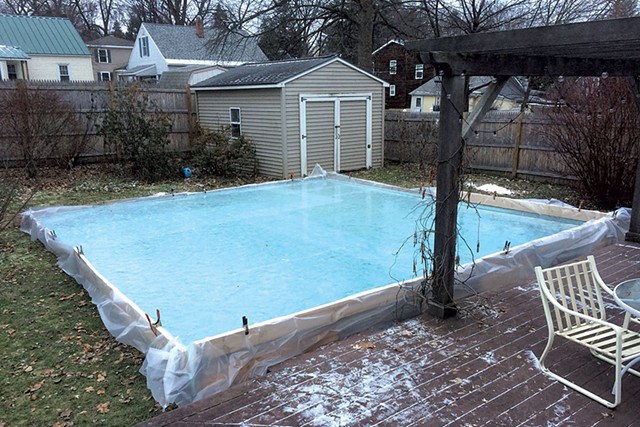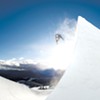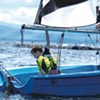Switch to the mobile version of this page.
Vermont's Independent Voice
- News
- Arts+Culture
- Home+Design
- Food
- Cannabis
- Music
- On Screen
- Events
- Jobs
- Obituaries
- Classifieds
- Personals
Browse News
Departments
Browse Arts + Culture
View All
local resources
Browse Food + Drink
View All
Browse Cannabis
View All
-
Culture

'Cannasations' Podcaster Kris Brown Aims to 'Humanize'…
-
True 802

A Burlington Cannabis Shop Plans to Host…
-
Business

Judge Tosses Burlington Cannabiz Owner's Lawsuit
-
Health + Fitness

Vermont's Cannabis Nurse Hotline Answers Health Questions…
-
Business

Waterbury Couple Buy Rare Vermont Cannabis License
Browse Music
View All
Browse On Screen
Browse Events
Browse Classifieds
Browse Personals
-

If you're looking for "I Spys," dating or LTRs, this is your scene.
View Profiles
Special Reports
Pubs+More
A Vermont Dad Reflects on His Annual Tradition of Building a Backyard Skating Rink
Published November 13, 2019 at 10:00 a.m. | Updated November 21, 2019 at 2:34 p.m.
Scrawled on the inside of the pantry door in my mother and stepfather's house are lines and dates marking their grandchildren's heights over the years. My twin daughters' growth is recorded there alongside my nephews' and nieces'. My parents have been living in that place long enough now that I'm starting to ponder what to do with that door when they eventually move out. I mean, obviously I'm going to preserve the "How tall am I?" door.
Here in my own home, our records are extensive and mostly digital — more family photographs and videos than we'll ever find the time to peruse. When one of my daughters brings home a skillfully rendered piece of original art, I usually photograph or scan it. Heaven forbid we lose a record of it!
I have a difficult time letting go of artifacts that record my family's existence. At the risk of awkward self-disclosure, I'll share that my own childhood was marked by a sense that I wasn't a kid worth keeping track of. My father took off when I was about my daughters' current age, 9, and he never really looked back. Boo-hoo.
So, when I became a father, I decided that I'd try to do things for my kids that my father never did for me. When my daughters could finally walk and run, building a backyard skating rink seemed like a good idea. I've built a rink for them every winter since.
The rink has become, like that pantry door at my mother's house, a way to measure their growth. I usually shoot two videos of the rink each season: one on inaugural skating day and one on the day they destroy the rink by boot-stomping it into a pond full of ice fragments.
To be honest, though, those documents don't matter as much to me as the undocumented moments we live out on the ice over the winter: the skating parties with other kids; the brief, impromptu skates after dinner and before bed; the times when my daughters, like kids everywhere, turn a simple thing, a sheet of ice, into part of a new, original game.
After the kids have left the ice, I'm left with reflections on my own childhood — happy memories in which rinks factor prominently. Through my backyard rink looking glass, I can still see the seemingly ubiquitous, naturally occurring "rinks" that used to fill the South Burlington farm pastures between the condominium complex where I grew up and the next one over. That's what life was like on the condo frontier. Those pastures are now other condo complexes.
My fourth-grade pal Uli and I shoveled off a serviceable rink in the courtyard of our complex where the water didn't drain properly. We made hockey goals out of milk cans — the tall kind that farmers use, because a condo complex that abuts a farm field is bound to have a few of these lying around.
My older brother, Lee, was especially resourceful at finding ice. Six years my senior, he was playing high school hockey when I was still in elementary school. To his great credit, he didn't think it was poor role modeling to show me how to "rink rat," as he put it. This entailed arriving at the University of Vermont's Gutterson Fieldhouse between hockey team practices and public skating sessions, lacing up our skates in an inconspicuous location, clambering over the boards with stick and puck, and getting in a little practice before someone chased us off.
Not that I'm condoning such behavior. Lee also wasn't hesitant to bring me along to play hockey on his friends' backyard skating rinks, which, you've got to admit, is a pretty decent thing for an older brother to do.
I never became much of a hockey player myself, but my rink time taught me the trick to making it through a Vermont winter: Find a way to turn to one's advantage the ice, snow and darkness that are otherwise such a pain in the ass. Having a backyard ice rink compels me not just to watch the weather forecast but to look forward to cold temperatures.
A night in the teens or twenties means that I can resurface the rink with a garden hose in relative comfort, the physical exertion tempering the chill. If the thermometer is going to dip below zero, I may not want to be running around the backyard with a hose. But I can splash a few buckets of water on the rink and watch it spread to form a smooth, glass-like surface.
When there's snow in the forecast, everything changes. I'll need to make time to shovel the rink as soon as I can and put down another layer of water to smooth out the bumps left behind. If there's snow and above-freezing temperatures, I've got trouble. The snow will melt the top layer of ice, making it impossible to shovel without leaving boot prints. No one wants to skate over boot prints. So I wait for the temperature to fall.
Maintaining my rink, while tedious at times, cultivates an appreciation for nature's immutable power. The success of my rink depends on letting water do its thing while containing it within the boards. You can't trick water into doing something it doesn't want to do. And if you give it room to run — even a pinhole in the rink plastic that covers the ground — it will leave you high and dry.
For all the meteorological vigilance that my backyard rink requires, it also offers moments of quiet contemplation. Of a winter's night, in the glow of the floodlights on the ice, I've pushed a shovel back and forth, back and forth, and found the routine calming. Likewise, flooding the rink with the hose — a few moments in this spot, a few moments in that spot. Running the "Zamboni" — which is to say, sloshing a mop bucket full of hot water across the rink — can also be relaxing.
For all the nostalgic attachments I have to my backyard skating rink, the fact that I have a backyard at all underscores the privilege that the rink symbolizes. I can look forward to cold days and nights because my family and I have a roof over our heads. What I do to help pay the mortgage I do inside where it's warm.
Some people work outside in winter. Some people live outside in winter. The joy I experience in tending to my rink takes place against a cold, inhospitable backdrop.
The rink is also a kind of portal connecting an emotionally complicated childhood with a hopeful future. I hope that our backyard rink provides durable, positive childhood memories to my daughters — and that those memories are a comfort to them when they need comfort on their life journeys. I hope that winter in Vermont will always be snowy and cold.
I fear that time is running out on both of these hopes, though. The planet's health is in jeopardy. And my daughters are getting older — old enough to find their very own backyard rink not such a big deal. Still, I'm making another rink this year. If no one else wants to skate, I'll go out there alone. Weather permitting, of course. Was I bummed to see the snow flying last week? I most certainly was not.
Ice Time
If you're up for making a backyard ice rink, you have two choices: You can do it the right way, or you can do it my way. The right way might entail visiting websites dedicated to backyard ice rink construction. Be careful: The backyard rink community is a bit of a cult — a benevolent one, but one that could draw you into extreme backyard rink practices, such as dedicating inordinate time to fabricating clever backyard versions of the patented Zamboni ice resurfacer.
Very fun. Just not my thing. What is my thing is a simple backyard ice rink made from four essential ingredients: wooden boards, stakes, plastic and water.
Here's where we're going: You're basically going to make a cup in your backyard with boards for walls and plastic to hold the water.
First, the boards and stakes. Make a square or rectangle — it's a matter of preference, the shape of the yard to cover and the size of the plastic, but we'll get to that last item in a minute. Hammer the stakes into the ground (preferably before it freezes) and lean the boards against the inside of the stakes so they'll stand up. Clamp the boards to the stakes if you want the frame to be very secure. I don't do that. When the water starts filling the rink, it pushes the boards against the stakes anyway. Your choice.
Next, lay the plastic inside the frame you've just made. I order clear plastic sheeting through Able Paint Glass & Flooring on Pine Street in Burlington because they carry a very wide type — 40 feet. (Lowe's stocks plastic 20 feet wide.) The narrower lining works for a rink for little kids. But, let me tell you, they outgrow a rink that size. I buy the thickest plastic I can: six mils (or .006 inch). Both sizes come in long rolls, which means that you can probably get a few seasons out of a single roll. If you manage to avoid puncturing the plastic over the season, and you can carefully roll it back up, you can reuse it. I've never done that. I always gouge the plastic with a shovel at some point, and I don't like taking the risk of putting down plastic and discovering that it had a hole in it when the rink fails to hold water.
Laying in the plastic is the most critical step. Don't step on the plastic when it hits the ground. Even a small tear can create a slow leak. Gingerly cover the portion of yard that you'll flood, and make sure the plastic is draped all the way to the boards and reaches all the way up and over them on all sides. Do your best to line the ground and boards neatly with the plastic; if it's a little wrinkled here and there, that's fine as long as the water will rise higher than the peak of the wrinkle. Likewise, if the plastic doesn't lay completely flat at the juncture of the ground and the boards, the water will probably push the plastic down to the ground anyway as it's filling. Leave plenty of plastic outside the rink frame to allow the water to pull in some plastic as it settles. As the water starts to climb up the boards, you can clamp the plastic to the top of the boards so it stays in place and doesn't flap into the water with a breeze.
Now get out a garden hose and fill the rink. I pick a stretch of days when the temperature is going to stay well below freezing to flood the rink. One portion of my yard that the rink covers is much lower — deeper, in rink terms — than another, so my rink can take up to a week to freeze. It all depends on the weather.
A couple of finer points:
If your backyard is bumpy or uneven, you can still make a rink. I can't tell you how many people wonder how I level off my rink. I don't. Gravity does. Check this out: Hold a cup half full (or half empty) of water in front of your face and tilt it from side to side. The water stays level!
The only thing to keep in mind here is that your boards have to be high enough to offset the difference between the lowest and highest parts of the yard to be flooded. In other words, as the water fills in the frame, it's going to creep up the boards as it seeks to level out. As long as it doesn't have to creep over the boards at any point, you're all set.
Here's how I think about a sloped yard. Let's say the difference in altitude between the lowest and highest points of my yard is about six inches. I'll use 12-inch-wide boards for my rink. Why? When the water begins to cover the highest point in the rink, it will have risen six inches up the boards at the lowest point. When it's four inches up the boards at the highest point, it will cover 10 of the 12 inches of board at the lowest point. The water is level, and there's much more of it in the low spot than the high spot. No problem with 12-inch boards.
The boards don't have to be particularly thick; two inches is plenty. Most of my board lengths are 8 to 12 feet, but what's right for you will depend on the size of the rink you're trying to make.
If you want help with your backyard rink, send me an email or find me on Facebook or Twitter (@erikee). If you scroll through either social media feed, you'll see that I'm not a huge fan of the current U.S. president — even though he once financed an ice rink in New York City. My Facebook feed includes some videos I've posted of my kids' ritual first skates and rink destructions. If you have your own tips on how to make a backyard rink, feel free to leave them in the comments section of this article or on my social media.
Good luck. Cross your fingers for bad weather!
The original print version of this article was headlined "Cold Comfort | A dad reflects on his annual tradition of building a backyard ice rink"
Related Stories
Got something to say?
Send a letter to the editor
and we'll publish your feedback in print!
More By This Author
About The Author

Erik Esckilsen
Bio:
Erik Esckilsen is a freelance writer and Champlain College professor who lives in Burlington.
Erik Esckilsen is a freelance writer and Champlain College professor who lives in Burlington.
Speaking of...
-

Road Salt Pollutes Vermont Waterways. So Why Aren't More Municipalities Curbing Its Use?
Nov 8, 2023 -

Darn Tough’s Unusual Lifetime Guarantee on Socks Is Darn Popular
Nov 8, 2023 -

Camel's Hump Nordic Ski Area's Dave Brautigam Brings the Good, the Bad and the Corn Snow to Your Inbox
Nov 8, 2023 -

On-Slope Video Technology Captures All Your Downhill Runs Without Gaps, Gaffes or Frozen Fingers
Nov 8, 2023 -

U.S. Skeleton Champ Sara Roderick Sets Her Sights on the 2026 Olympics
Nov 8, 2023 - More »
Comments
Showing 1-1 of 1
Comments are closed.
From 2014-2020, Seven Days allowed readers to comment on all stories posted on our website. While we've appreciated the suggestions and insights, right now Seven Days is prioritizing our core mission — producing high-quality, responsible local journalism — over moderating online debates between readers.
To criticize, correct or praise our reporting, please send us a letter to the editor or send us a tip. We’ll check it out and report the results.
Online comments may return when we have better tech tools for managing them. Thanks for reading.
- 1. A Former MMA Fighter Runs a Wildlife Rehabilitation Center in Cabot News
- 2. The Magnificent 7: Must See, Must Do, May 1-7 Magnificent 7
- 3. Animal Communicator Amy Wild Wants a Word With Your Pet Animals
- 4. Student Film Documents Failed Plan to Cut Books From Vermont State University Libraries Film
- 5. This Manchester Center Family Is a National Show Horse Powerhouse Animals
- 6. Ever Since the Solar Eclipse, I’ve Been Feeling Weird Ask the Rev.
- 7. The Magnificent 7: Must See, Must Do, April 24-30 Magnificent 7
- 1. How a Vergennes Boatbuilder Is Saving an Endangered Tradition — and Got a Credit in the New 'Shōgun' Culture
- 2. Video: The Champlain Valley Quilt Guild Prepares for Its Biennial Quilt Show Stuck in Vermont
- 3. Waitsfield’s Shaina Taub Arrives on Broadway, Starring in Her Own Musical, ‘Suffs’ Theater
- 4. Video: 'Stuck in Vermont' During the Eclipse Stuck in Vermont
- 5. Pet Project: Introducing the Winners of the 2024 Best of the Beasts Pet Photo Contest Animals
- 6. This Manchester Center Family Is a National Show Horse Powerhouse Animals
- 7. Crossing Paths: An Eclipse Crossword 2024 Solar Eclipse










































